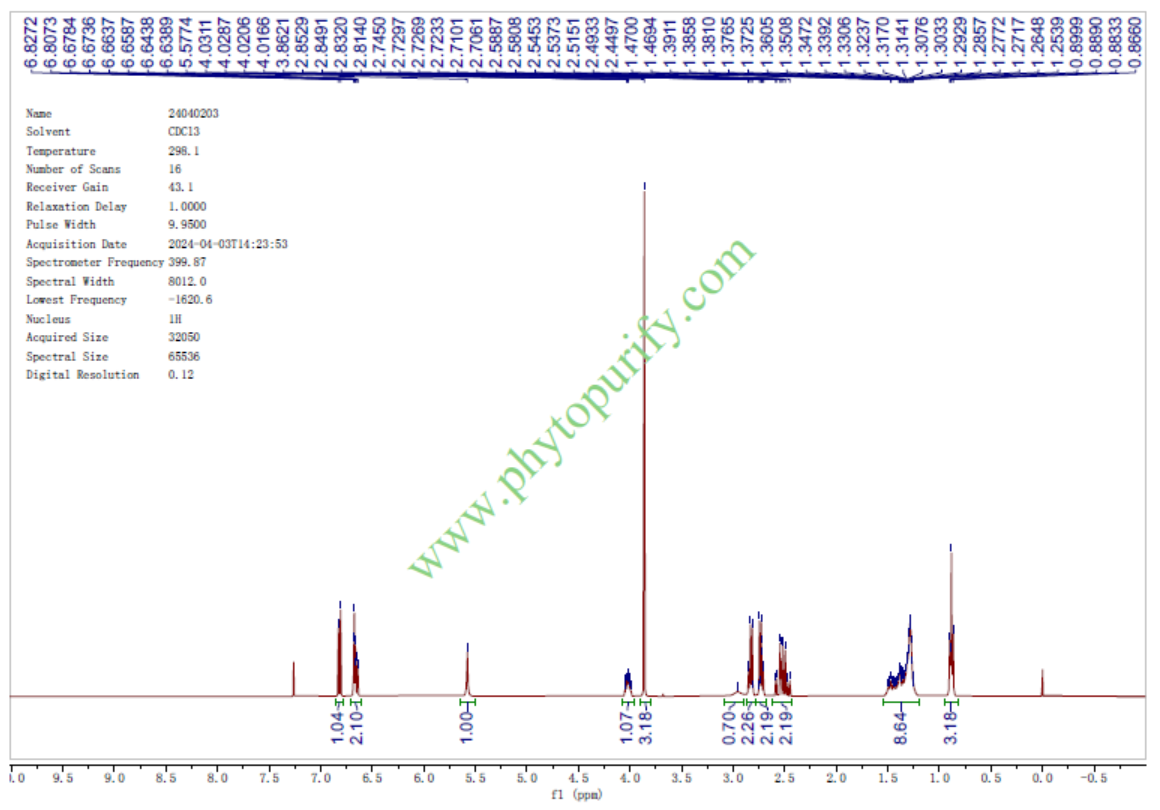6-Gingerol Descrtption
6-Gingerol
Synonym name:
Catalogue No.: BP0092
Cas No.: 23513-14-6
Formula: C17H26O4
Mol Weight: 294.391
Botanical Source: ginger (Zingiber officinale)
Purity: 90%~99%
Analysis Method: HPLC-DAD
Identification Method: Mass, NMR
Packing: Brown vial, HDPE plastic or Aluminum bottle
Can be supplied from milligrams, grams to kilograms.
The purity(assay) of 90%, 95% and 98% is available for food, nutrition and cosmetics request, except for R&D and reference standard.
References:
1, Analgesic and anti-inflammatory activities of [6]-gingerol
Journal of Ethnopharmacology Volume 96, Issues 1–2, 4 January 2005, Pages 207–210
Abstract
In the present study, the analgesic and anti-inflammatory effects of [6]-gingerol, which is the pungent constituent of ginger, were performed. Intraperitoneal administration of [6]-gingerol (25 mg/kg–50 mg/kg) produced an inhibition of acetic acid-induced writhing response and formalin-induced licking time in the late phase. [6]-Gingerol (50 mg/kg–100 mg/kg) also produced an inhibition of paw edema induced by carrageenin. These results suggested that [6]-gingerol possessed analgesic and anti-inflammatory activities.
2, [6]-Gingerol, a pungent ingredient of ginger, inhibits angiogenesis in vitro and in vivo
Biochemical and Biophysical Research Communications Volume 335, Issue 2, 23 September 2005, Pages 300–308
3, Molecular targets of [6]-gingerol: Its potential roles in cancer chemoprevention.
Biofactors. 2010 May-Jun;36(3):169-78. doi: 10.1002/biof.78.
Abstract
A wide variety of phenolic compounds derived from spices possess potent antioxidant, anti-inflammatory, antimutagenic, and anticarcinogenic activities. [6]-gingerol (1-[4'-hydroxy-3'-methoxyphenyl]-5-hydroxy-3-decanone) is the major pungent principle of ginger, with numerous pharmacological properties including antioxidant, anti-inflammation, and antitumor promoting properties. It could decrease inducible nitric oxide synthase (iNOS) and tumor necrosis factor alpha (TNF-alpha) expression through suppression of I-kappaB alpha (IkappaBalpha) phosphorylation, nuclear factor kappa B (NF-kappaB) nuclear translocation. Other antiproliferative mechanisms of [6]-gingerol include the release of Cytochrome c, Caspases activation, and increase in apoptotic protease-activating factor-1 (Apaf-1) as mechanism of apoptosis induction. Taken together, the chemopreventive potentials of [6]-gingerol present a promising future alternative to therapeutic agents that are expensive, toxic, and might even be carcinogenic.
HNMR of 6-Gingerol
HPLC of 6-Gingerol




